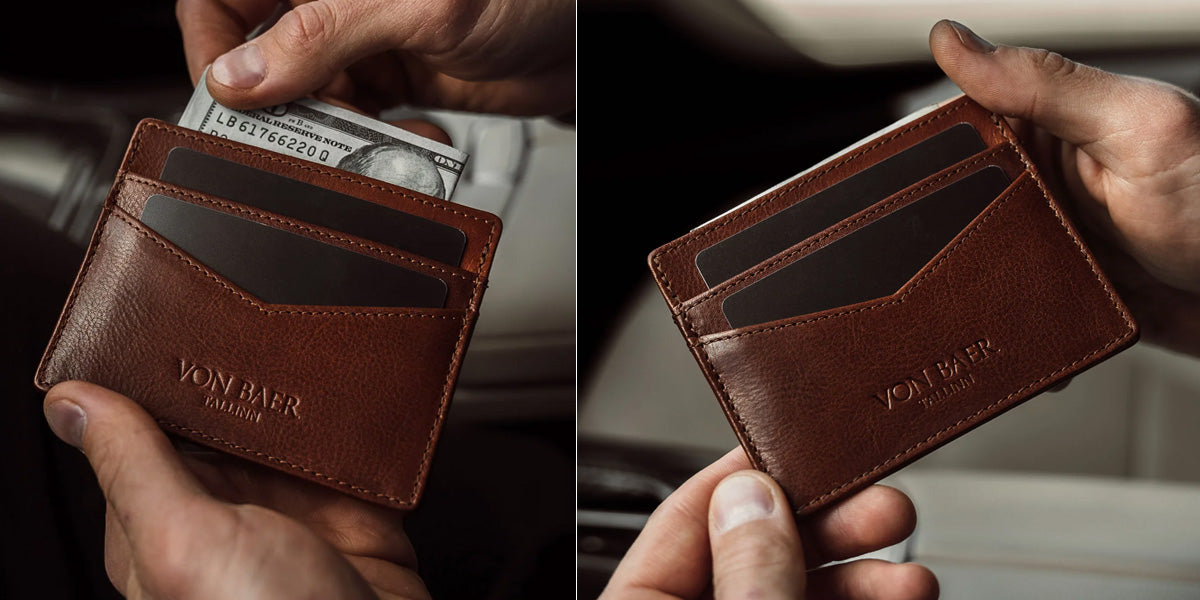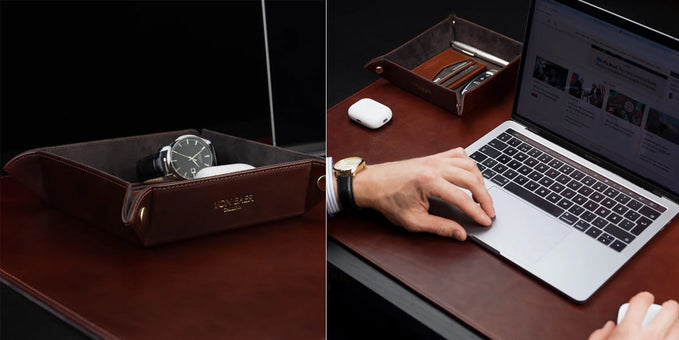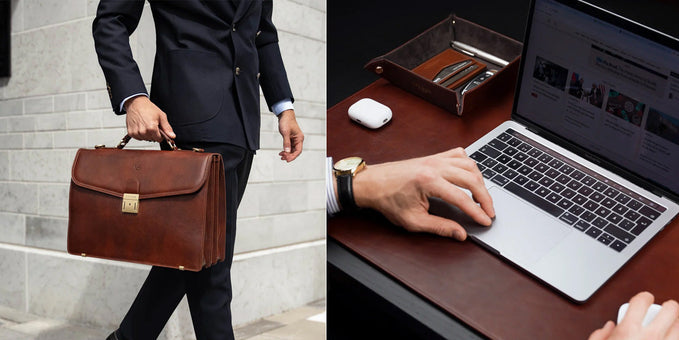What is an RFID Wallet?

An RFID wallet is a normal wallet with a hidden protective layer that prevents RFID technology from working on your cards while they're in the wallet.
The main benefit of this is preventing people from skimming your cards and stealing your credit card details.
All Von Baer wallets have this RFID-blocking lining, and are handmade full-grain vegetable-tanned leather.
RFID Wallets: A Modern Solution
Image: Classic Bifold RFID Wallet (link)
RFID is the technology used to allow payment by “tapping” our card or phone on a receiver.
This is very convenient, but it has presented sophisticated criminals with a way to steal from you – and you wouldn’t even know it until much later.
Using a device similar to the receiver in the store, these thieves simply walk by, and the device picks up the data – no need to touch or disturb you. Your wallet or phone stays in your pocket or purse.
RFID wallets are designed to block those signals – unless you’re intentionally buying something.
Using a special foil, built into the wallet’s construction, the RFID signals are blocked, so as far as the would-be thief knows, you don’t even have a wallet or phone with you.
It protects not just your cash but your passport and other electronically connected items.
Why You Need an RFID Wallet
Image: Money Clip RFID Wallet (link)
This kind of theft is on the rise, and since nearly everyone uses it in their wallets, it has become very lucrative to thieves.
You don’t need to be one of the victims.
By planning ahead and investing in an RFID wallet, you can rest in the peace of mind that you are protected.
The process is simple:
- Prevents Unauthorized Access: The wallet will allow you to buy when you want to, but no signal is getting through when you don’t want to.
- Easy to Use: Works just like a regular wallet, but when it’s closed, it is secure from scanning.
- Enhanced Security: It makes you more secure against this kind of theft and gives you the peace of mind that your money and data are safe.
How RFID Blocking Works
Image: Travel Organizer RFID Wallet (link)
RFID wallets use foil materials that create a “Faraday cage,” which blocks electromagnetic fields. It creates a barrier that isolates your cards and chips.
- Faraday Cage Technology: This blocks electromagnetic signals. It was first developed by Michael Faraday in 1836 (source). Since then, we have found many uses for it, including protecting you from microwave radiation in your microwave oven at home.
- Built-In Protection: You don’t have to do anything special. Since it is a passive technology, it works just by being there – no power source, no need to check a charge level, turn it on, or anything. Super simple (source).
We have a more detailed guide about how it works here.
Choosing the Right RFID Wallet
Image: Washington Trifold RFID Wallet (link)
Look for a wallet that has the functions you need and the style you like.
- Material Quality: The best choices include quality leather, metal, and durable synthetics. These ensure durability and enhance the ability to block RFID signals.
- Design Preferences: Choose a style that suits your look. Consider minimalist, bifold, trifold, or a money clip. Every design has pros and cons, but with a little thought, you will find the one that’s best for you.
- Additional Features: Many models come with a place for your cash and various numbers of card slots, and some even include GPS or Bluetooth tracking to help recover a lost or stolen wallet.
All Von Baer wallets include RFID protection; see them here.
Personal Experience: A Secure Investment
Image: Minimalist RFID Card Holder (link)
Picture yourself receiving your new, sleek, RFID wallet and transferring your cards and other items into it. It looks great and fits comfortably.
You then go about your everyday business, enjoying the look and feel of your new wallet. Then, you see a news bulletin about a rash of “skimming” thefts in your area – unauthorized RFID scanning.
Thieves have been at work, but so has your new wallet.
You’ll double-check, of course, but you have the peace of mind of knowing you protected yourself.
Are There Any Downsides to Using an RFID Wallet?
RFID wallets include a thin material layer used to create the Faraday cage. This increases the weight and thickness of the wallet by a small amount, but in most cases, this is not even noticeable.
RFID technology also increases the production cost of the wallet, so the final price is higher than that of the same type of wallet without protection.
Compare that cost to losing control of your ID or bank accounts, though, and it is a bargain.
Do RFID Wallets Interfere with My Ability to Use My Cards?
RFID blocks signals from penetrating the wallet, so when you want to use a card, simply open the wallet and expose the card to the reader.
The card returns to its protected slot in the closed wallet when done.
How Do I Test if My RFID Wallet is Working?
Try scanning the card while it is still in the closed wallet.
If the payment goes through, it is not working, and you should check with the seller or manufacturer.
A functioning RFID wallet will block the signal, and the transaction will not go through.
In Summary
RFID wallets look and feel much like the old-fashioned kind, but under the surface, they include technology to protect you from “skimmers,” thieves who use RFID technology to steal your data without even having to touch you.
The security and peace of mind is worth the investment.

Author: Igor Monte
Igor Monte is the co-founder of Von Baer. He's an expert in all things premium leather, from being an end-user right up to the design and manufacturing process. His inside knowledge will help you choose the best leather product for you.
We strive for the highest editorial standards, and to only publish accurate information on our website.
Leave a Comment
Your email address will not be published.











